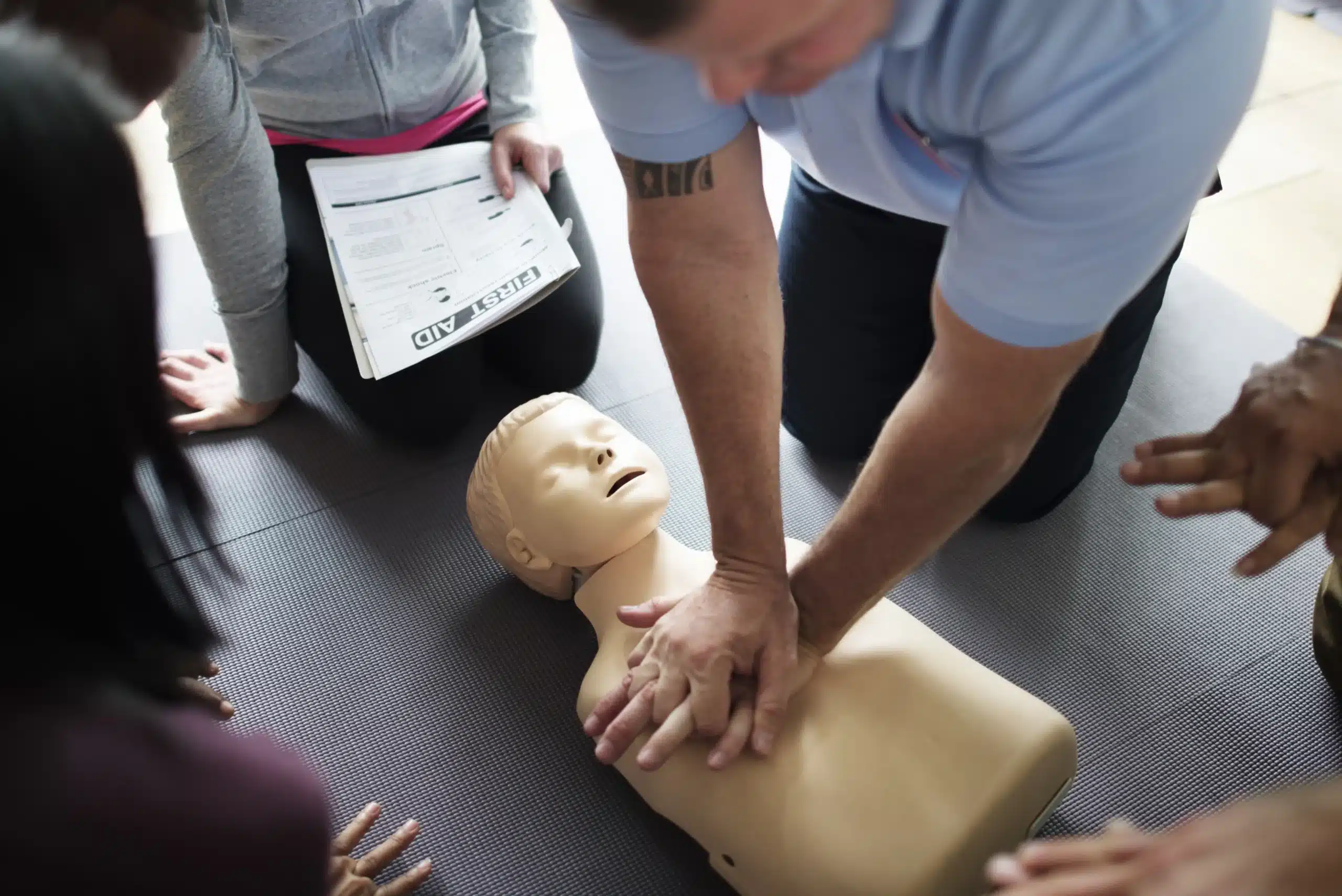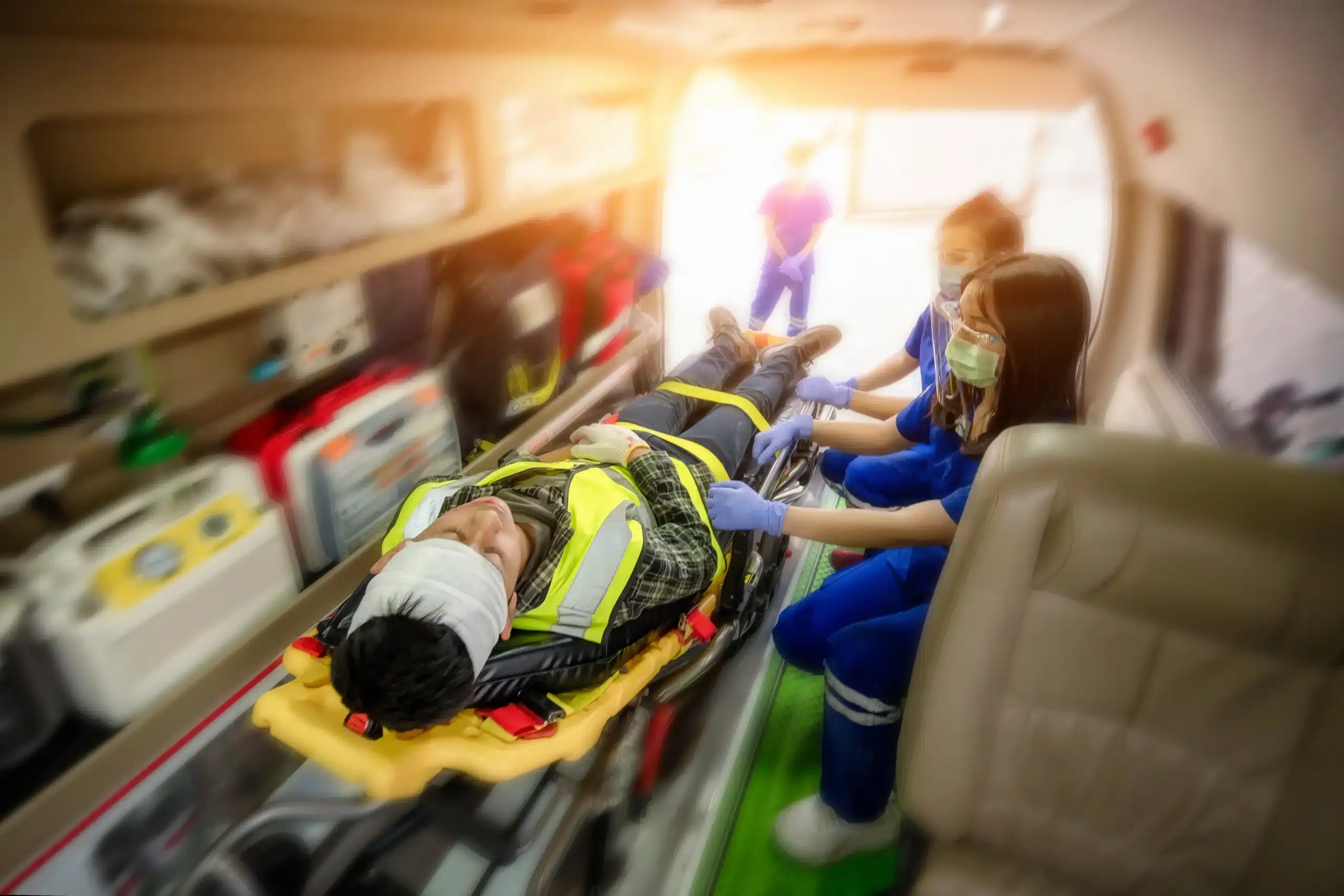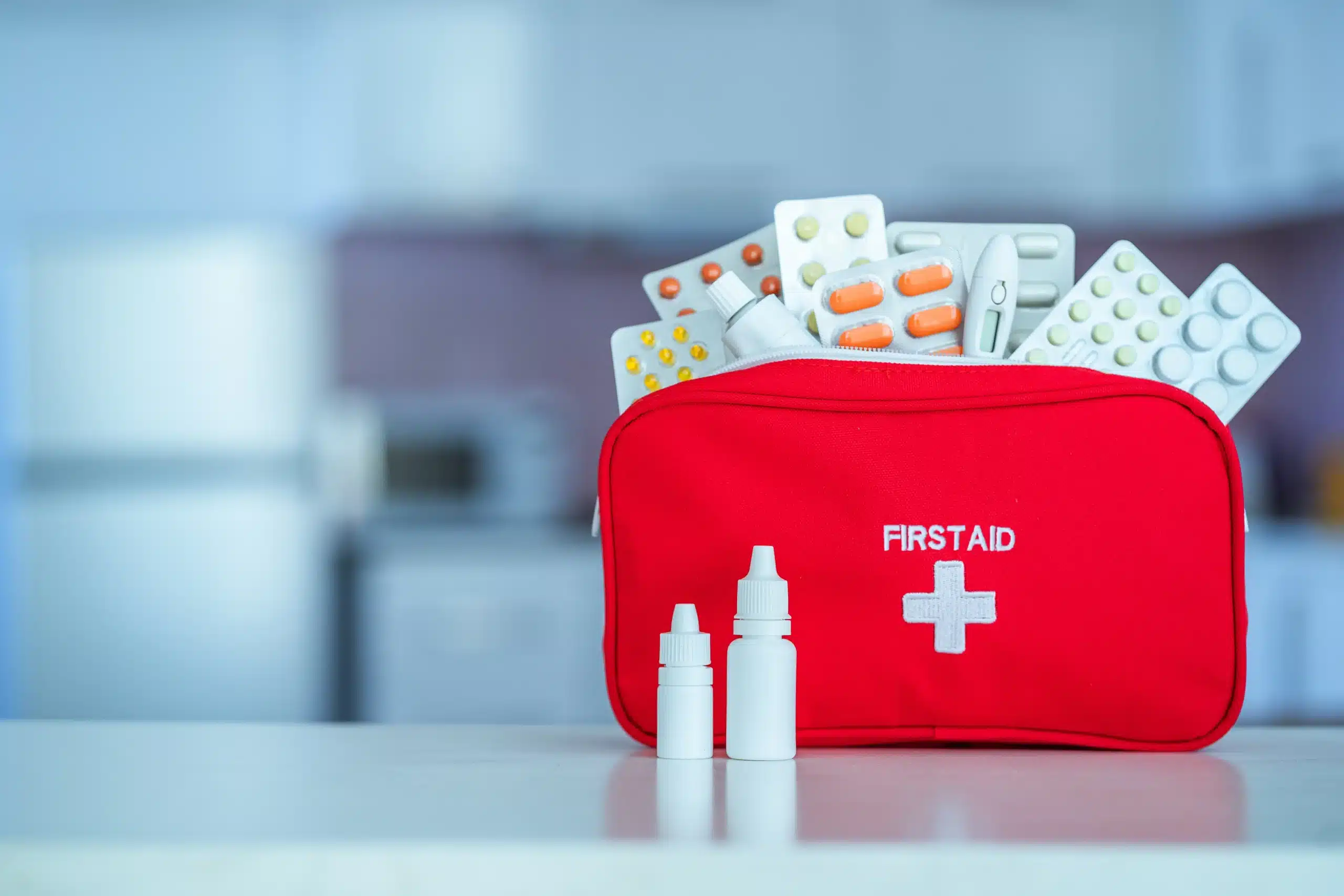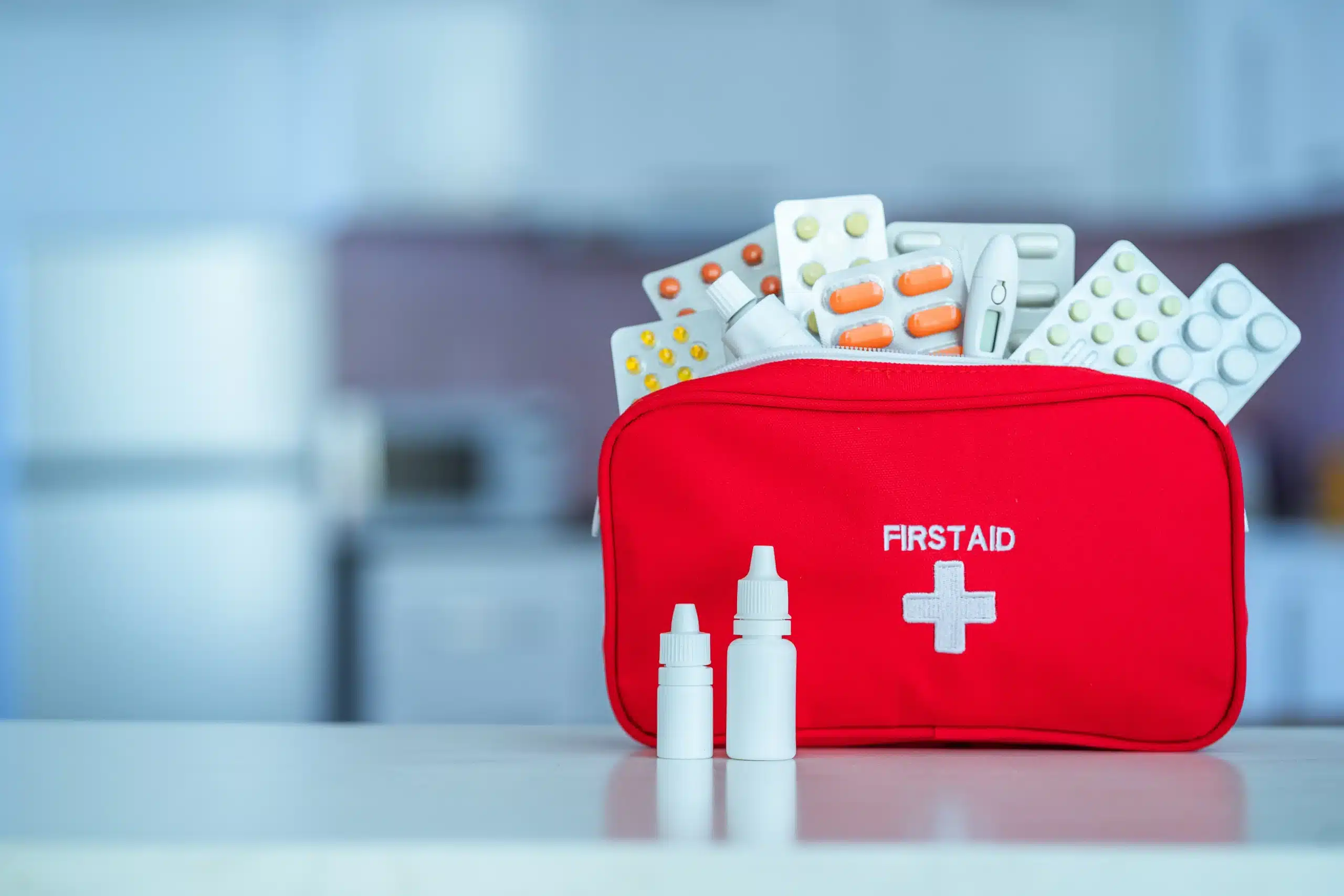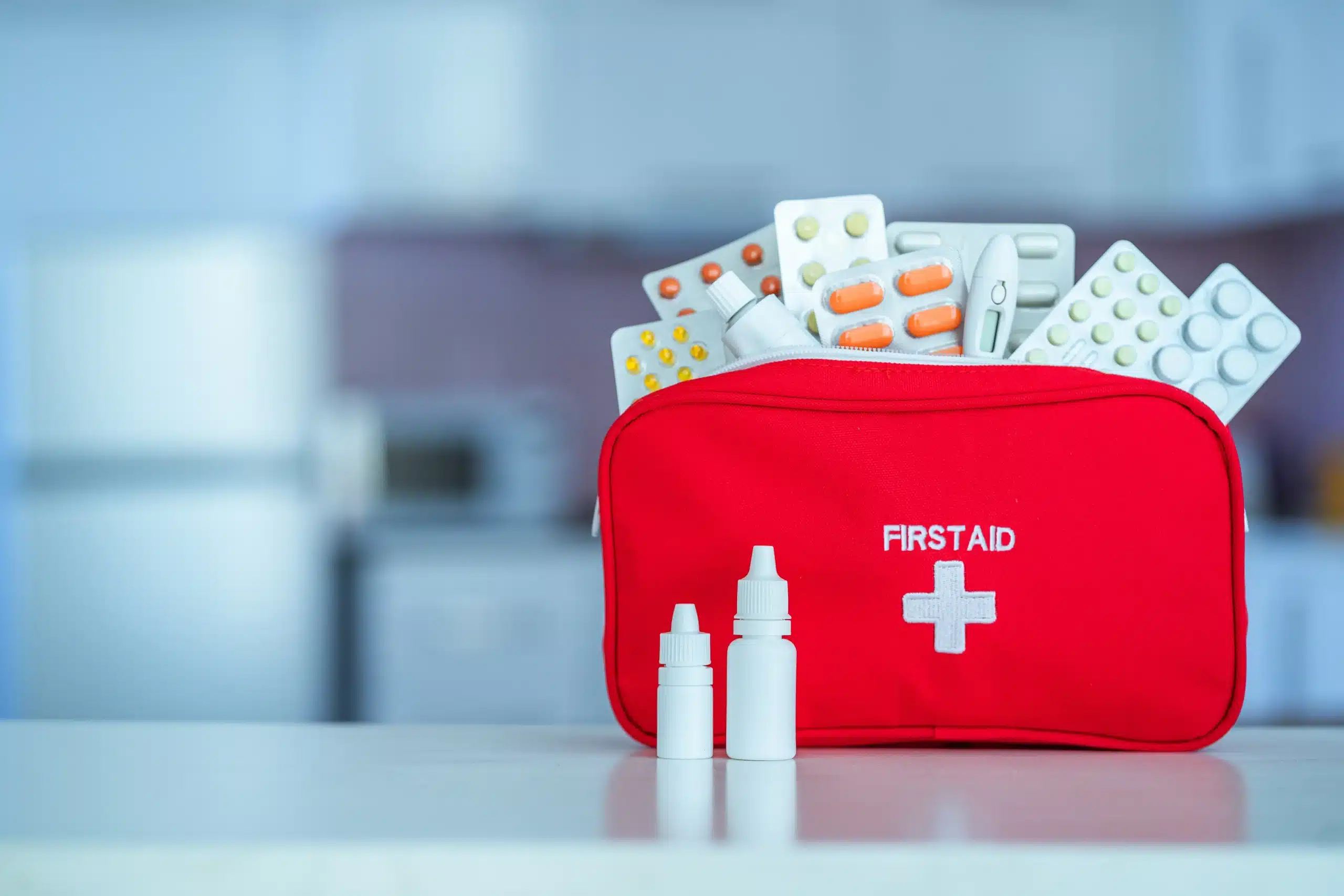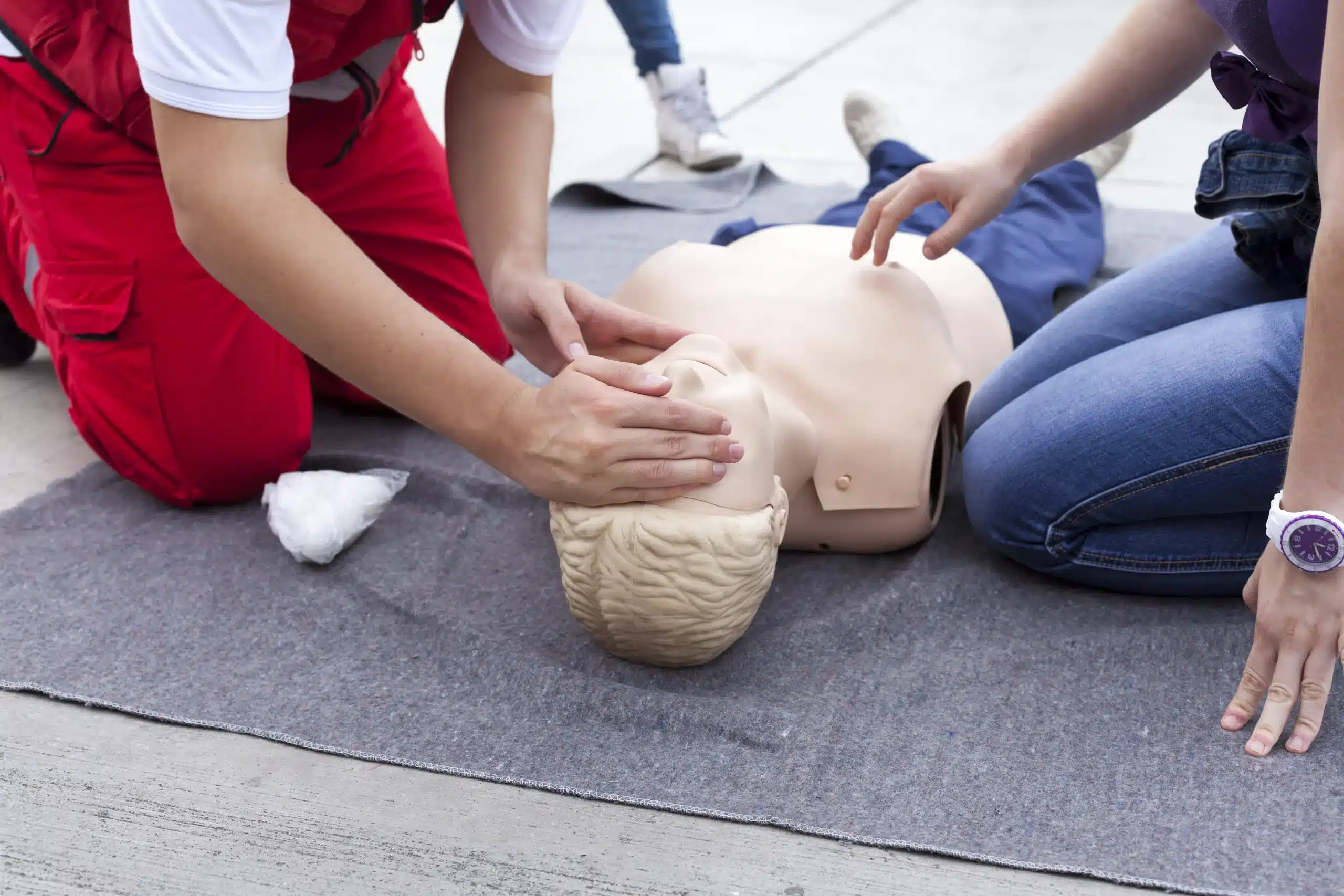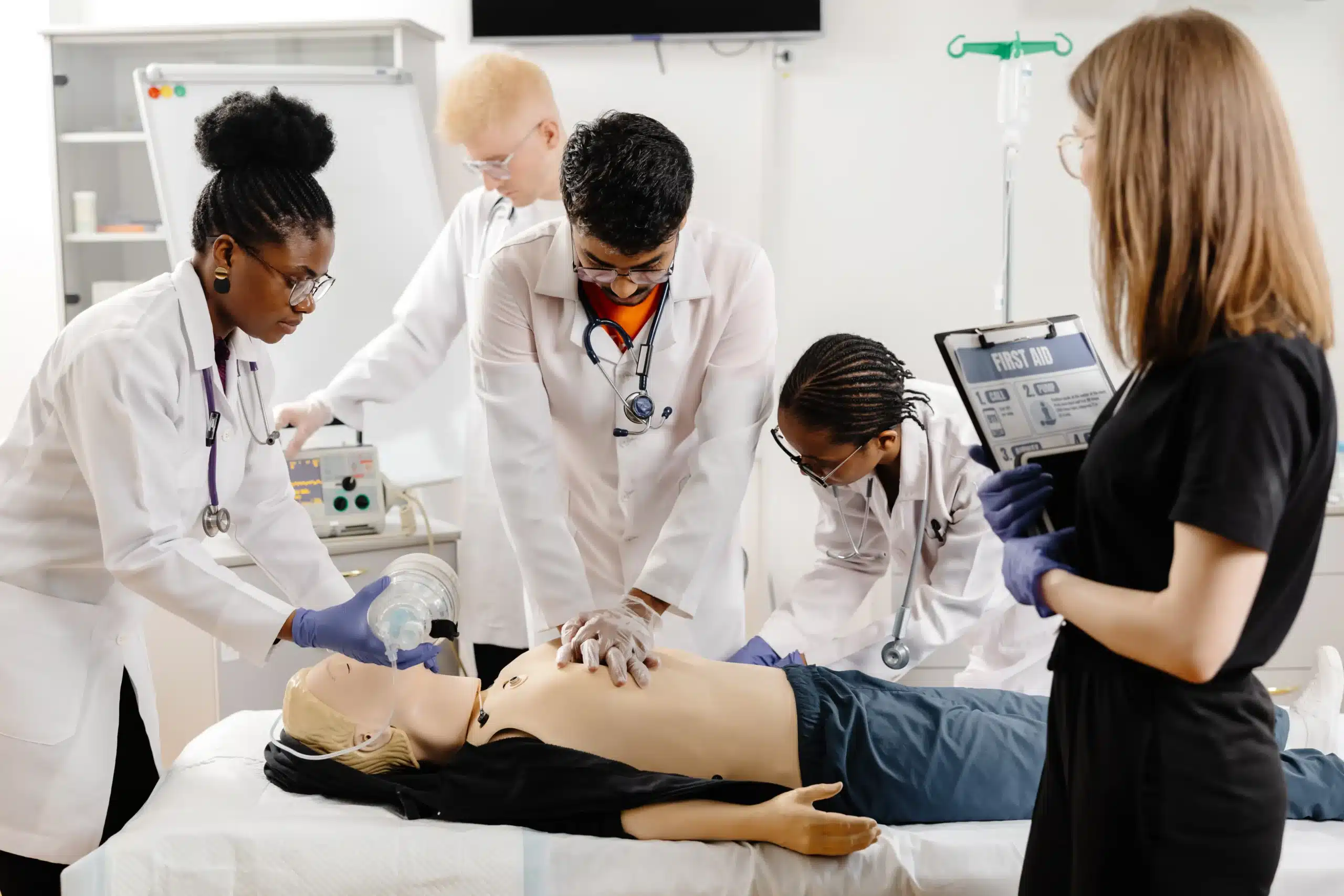Emergencies can happen anytime, anywhere. Are you ready to respond? Basic Life Support (BLS) training equips you with the skills and confidence to handle life-threatening situations. From performing CPR and using an AED to managing obstructed airways, BLS provides a comprehensive approach to emergency care. This training is crucial for healthcare professionals, first responders, and anyone who wants to be prepared to help in a crisis. Searching for “BLS classes near me”? This article will guide you through the process of finding the right BLS training program, understanding the different certification options, and discovering the career-boosting benefits of BLS.
Key Takeaways
- BLS certification provides essential life-saving skills: Whether for a healthcare career or personal preparedness, BLS training equips you with the skills to respond to emergencies, covering CPR, AED use, and airway management. Find a course format (in-person, blended, or online) that suits your needs.
- Select the right BLS course: Choose an accredited provider (AHA or Red Cross) offering hands-on practice and experienced instructors. Consider cost, location, and schedule when comparing options. Vallejo CPR Classes offers convenient courses in the Vallejo, Benicia, and American Canyon areas.
- Stay current with your BLS skills: Regular practice and refresher courses are essential for maintaining proficiency and confidence. Keep your certification up-to-date to ensure you’re always prepared for emergencies. Contact Vallejo CPR Classes for more information.
What is BLS?
Basic Life Support (BLS) is a crucial certification, especially for healthcare providers like doctors, nurses, EMTs, and first responders such as firefighters and police officers. It equips individuals with the skills to respond to life-threatening emergencies. BLS builds upon standard CPR training, covering advanced techniques for managing cardiac arrest, respiratory distress, and airway obstructions. If your job involves responding to medical emergencies, BLS training is essential. For more information, check out the American Heart Association’s resources on BLS.
What BLS Is and Why It Matters
BLS training programs are designed to meet the needs of both individuals and organizations, adhering to the latest American Heart Association (AHA) guidelines. The curriculum typically includes CPR, using an Automated External Defibrillator (AED), and airway management techniques for adults, children, and infants. This training isn’t just for healthcare professionals; it’s valuable for anyone who wants to be prepared to help in a medical crisis. The Red Cross also provides BLS certification courses.
Essential BLS Skills
BLS courses often use a scenario-based learning approach to build critical thinking and problem-solving skills for effective emergency response. Combining classroom instruction with hands-on practice, these courses prepare participants to confidently handle real-life emergencies. Red Cross BLS training emphasizes this practical approach, ensuring you gain the skills and confidence to make a difference in critical situations. Mastering these essential BLS skills can significantly improve outcomes during medical emergencies.
BLS Class Formats
Choosing the right BLS class format depends on your learning style and schedule. Let’s break down the most common options: in-person, online, and blended learning.
In-Person BLS
In-person BLS classes provide a structured learning environment with face-to-face interaction. These courses combine traditional classroom instruction with hands-on practice. You’ll work directly with an instructor, receive real-time feedback, and have the opportunity to ask questions and learn from your peers. This format is ideal for those who thrive in a group setting and value direct interaction. In-person training also ensures you have immediate access to equipment and expert guidance as you develop your skills. Vallejo CPR Classes offers convenient in-person BLS training in Vallejo, serving surrounding areas like Benicia and American Canyon.
Online BLS
While the American Heart Association requires an in-person skills assessment for BLS certification, some portions of the course can be completed online. This online component allows you to study the cognitive material at your own pace, offering flexibility for busy schedules. However, keep in mind that a fully online BLS course won’t meet the requirements for certification. You’ll still need to schedule an in-person skills session to demonstrate your proficiency. Contact us to learn more about how our online resources can supplement your in-person BLS training.
Blended Learning BLS
Blended learning combines the best of both worlds. This format allows you to complete the coursework online at your convenience, then attend an in-person session to practice and test your skills. Blended learning offers a flexible and efficient way to earn your BLS certification while still benefiting from hands-on training and expert instruction. Vallejo CPR Classes can help you find the right blended learning option to fit your needs.
Find Accredited BLS Training
Finding the right BLS training program is crucial for receiving high-quality instruction and a recognized certification. Here’s a breakdown of what to look for:
AHA Providers
The American Heart Association (AHA) sets the gold standard for BLS certification. Many employers, including hospitals and clinics, require AHA-approved certifications to ensure their staff are trained to the highest standards. Look for training centers affiliated with the AHA, like Vallejo CPR Classes, which offer the same curriculum and high-quality instruction as official AHA courses. This ensures you receive a certification widely accepted in the healthcare field. AHA-certified providers often offer various course formats, including in-person, online, or blended learning options to fit your schedule and learning style.
Red Cross BLS
The American Red Cross also offers BLS training and certification programs. They emphasize a scenario-based approach to improve critical thinking and problem-solving skills in emergency situations. Like the AHA, the Red Cross provides various learning formats, including online, in-person, and blended learning. While the Red Cross is a reputable organization, it’s important to note that some employers specifically require AHA certification. Check with your employer or desired workplace to confirm which certification they prefer.
Other Accredited Organizations
While the AHA and Red Cross are the most prominent providers, other accredited organizations offer BLS training. Make sure any program you choose aligns with your career goals and employer requirements. For example, the National Registry of Emergency Medical Technicians (NREMT) offers BLS certification specifically for EMTs and other emergency responders. If you’re pursuing a career in emergency medical services, an NREMT certification might be more relevant. Always verify the accreditation and recognition of any organization before enrolling in their BLS course. Local community colleges or hospitals may also offer accredited BLS training, so explore those options as well.
What Happens in a BLS Class?
BLS classes cover essential life-saving techniques, but the specifics depend on the format you choose: in-person, blended learning, or online. Regardless of format, the curriculum typically includes adult, child, and infant CPR, AED use, and relief of choking. High-quality courses, like those offered by Vallejo CPR Classes, align with the latest American Heart Association (AHA) guidelines.
Course Content and Length
BLS courses cover core concepts like recognizing life-threatening emergencies, performing chest compressions, giving rescue breaths, and using an AED. You’ll also learn about teamwork, high-quality CPR, and special situations. Course length varies depending on the format and provider, but expect to spend around four hours for a BLS certification course. Blended learning options often combine online coursework with shorter in-person skills sessions.
Hands-on Practice
Hands-on practice is crucial for mastering BLS skills. In-person and blended learning courses provide opportunities to practice CPR and AED use on manikins. This hands-on training builds muscle memory and confidence, preparing you to respond effectively in real emergencies. Instructors provide feedback and guidance, ensuring you learn proper techniques.
Exams
Most BLS courses include a written exam and a practical skills test. The written exam assesses your understanding of the course material, while the skills test evaluates your ability to perform BLS techniques correctly. You’ll typically receive your BLS certification card the same day you complete both components. The AHA requires an in-person skills assessment, so there’s no fully online option for AHA-certified BLS.
BLS Certification: Cost & Value
Getting BLS certified is an investment in your skills and career. Understanding the costs and potential return can help you make an informed decision.
Typical Costs
BLS certification costs vary depending on the training provider, location, and course format. You can expect to find BLS courses ranging from around $75 to $100. Some training centers, like LBW Training Center, offer packages that bundle BLS with other certifications such as ACLS and PALS. This can increase the overall cost but provides more comprehensive training. Always check with your chosen provider for their most up-to-date pricing. At Vallejo CPR Classes, we offer a low price guarantee, so you can be confident you’re getting a great value.
Discounts
Many organizations offer discounts for BLS certification, making it even more accessible. Some common discounts include those for military personnel, students, and groups. For example, LBW Training Center offers a military discount, and some providers offer discounts for group bookings. Be sure to ask your training provider about potential discounts to reduce the cost of your certification. Contact us at Vallejo CPR Classes to learn about our latest offers.
Career Benefits
BLS certification is a valuable asset for many careers. It’s often a requirement for healthcare professionals, first responders, and other roles involving public safety. The Red Cross highlights the importance of BLS certification, emphasizing its role in emergency situations. Having a current BLS certification can open doors to new job opportunities and demonstrate your commitment to providing high-quality care. Plus, staying up-to-date with the latest BLS techniques through recertification ensures you’re always prepared to respond effectively in critical situations. Consider getting your BLS certification through our courses at Vallejo CPR Classes.
Get BLS Certified
Steps to Certification
Ready to become BLS certified? The process is straightforward. You can find BLS certification courses through trusted organizations like the American Red Cross and the American Heart Association. These organizations offer various course formats—online, in-person, and blended learning—to fit your schedule and learning style. No matter which format you choose, the training includes classroom instruction and hands-on practice to prepare you for real-life emergencies. The curriculum is based on the latest scientific guidelines and best practices, so you can trust you’re learning the most up-to-date information. For example, the American Red Cross ensures its training reflects current guidelines by utilizing their Scientific Advisory Council. Once you complete the course and pass the exam, you’ll receive your BLS certification. Contact us at Vallejo CPR Classes to learn more about our course offerings.
Renewal
BLS certifications are typically valid for two years. To maintain your skills and stay up-to-date with the latest procedures, you’ll need to renew your certification before it expires. Organizations like the American Red Cross offer recertification courses, often available in the same formats as initial certification courses. It’s a good idea to check with your certifying organization about their specific renewal process and any deadlines. Staying current with your BLS certification ensures you’re always prepared to provide effective assistance in emergencies. Contact us at Vallejo CPR Classes to find out more about BLS recertification.
Choose the Right BLS Class
So, you’re ready to get your BLS certification—great! Choosing the right class is an important step. This section will walk you through key factors to consider and how to compare different providers.
Factors to Consider
First, think about your learning style and available time. Do you prefer hands-on, in-person instruction? Or would you rather learn at your own pace with an online component? Luckily, BLS classes come in several formats. You can find traditional in-person BLS courses, online options, and blended learning programs that combine both. Consider what works best for your schedule and how you learn most effectively. If you’re unsure, a blended learning approach might be a good compromise, offering some flexibility while still providing crucial in-person skills practice. The American Red Cross offers various BLS training formats to suit different learning styles.
Another important factor is location. Search for classes near you, especially if you prefer in-person training. Vallejo CPR Classes offers convenient BLS certification courses for residents of Vallejo, Benicia, and American Canyon, CA.
Compare Providers
Not all BLS classes are created equal. It’s essential to choose a course that meets your specific needs and is recognized by your employer (if applicable). Here’s what to look for when comparing providers:
- Accreditation: Make sure the provider is accredited by a recognized organization like the American Heart Association (AHA). Many employers require AHA-certified BLS training, so double-check this before signing up. A-B-CPR emphasizes the importance of AHA approval for BLS certification. Vallejo CPR Classes is affiliated with Safety Training Seminars, a trusted AHA Training Center, ensuring your certification meets industry standards.
- Hands-on Practice: BLS skills require muscle memory. Effective CPR and AED use depend on practical experience, so choose a course that emphasizes hands-on training. A-B-CPR highlights the importance of hands-on training for developing essential BLS skills.
- Instructor Quality: Experienced, knowledgeable instructors can make all the difference. Look for classes taught by certified professionals with a strong background in healthcare. A good instructor will create a supportive learning environment and provide personalized feedback.
- Cost and Schedule: Compare prices and schedules from different providers. Vallejo CPR Classes offers a low price guarantee, making quality BLS training accessible and affordable. Check their website for upcoming class dates and times. If you have questions, reach out to them directly through their contact page.
Top Local BLS Training
Finding the right BLS training program is crucial for both your career and your confidence in emergency situations. Here’s a rundown of some respected providers:
Vallejo CPR Classes
For those in or near Vallejo, California, Vallejo CPR Classes offers accessible, high-quality training. We provide a range of American Heart Association (AHA)-certified courses, including BLS, ACLS, and PALS. We understand busy schedules, so we offer flexible class times and a low price guarantee. Serving Vallejo, Benicia, and American Canyon, our focus is on providing convenient and affordable training. Contact us today to learn more.
American Heart Association (AHA)
The AHA sets the standard for CPR and emergency cardiovascular care. They offer a range of BLS courses designed for healthcare providers. Many training centers throughout the country offer AHA-certified courses, making it easy to find one near you. Look for an AHA Training Center like Safety Training Seminars, affiliated with Vallejo CPR Classes, with over 60 locations in Northern California. They provide the high-quality training you expect from an established institution. AHA courses such as ACLS and PALS certifications are also available.
American Red Cross
The American Red Cross is another well-known and respected provider of BLS training. They offer various course formats, including online, in-person, and blended learning options. This flexibility allows you to choose the learning style that best suits your needs. The Red Cross also provides BLS certification for individuals and organizations.
National Safety Council (NSC)
The National Safety Council offers a variety of CPR and first aid training courses, including BLS. Their courses are tailored to meet the needs of both healthcare professionals and the general public. The NSC focuses on practical skills and knowledge retention, ensuring you’re prepared for real-world emergencies.
ProTrainings
ProTrainings focuses on online and blended learning BLS courses designed for healthcare professionals. Their approach emphasizes practical skills and knowledge application, giving you the confidence to respond effectively in critical situations. They offer various learning resources and support to help you succeed.
Benefits of BLS Certification
Getting BLS certified isn’t just about checking a box; it’s about equipping yourself with skills that can make a real difference. Whether you’re pursuing a career in healthcare or simply want to be prepared for emergencies, BLS certification offers valuable benefits.
Advance Your Career
For many healthcare professionals, BLS certification is a prerequisite. It demonstrates your commitment to patient safety and provides a foundation for advanced certifications like ACLS (Advanced Cardiovascular Life Support) and PALS (Pediatric Advanced Life Support). Even outside of traditional healthcare settings, BLS certification can enhance your resume. Many employers, from childcare providers to fitness instructors, prefer candidates with these essential life-saving skills. Holding a current BLS certification shows you’re prepared to handle emergencies and prioritize safety. This can open doors to new opportunities and give you a competitive edge. Regularly renewing your certification ensures you stay up-to-date with the latest best practices.
Be Prepared
BLS certification empowers you to respond effectively in critical situations. You’ll learn how to perform CPR, use an AED, and relieve obstructed airways in adults, children, and infants. These skills can be invaluable in emergencies, giving you the confidence to act quickly and potentially save a life. BLS training covers essential skills, including recognizing the signs of a heart attack or stroke. This knowledge can help you identify emergencies early and provide appropriate care until professional help arrives. Knowing you have these skills can bring peace of mind, whether you’re at home, at work, or out in your community. You’ll be prepared to assist family, friends, coworkers, or even strangers in need.
Keep Your BLS Skills Sharp
Once you’re BLS certified, regular practice is key to staying sharp and confident in your abilities. It’s like any other skill—the more you use it, the better you become.
Practice
Consistent practice is crucial for maintaining BLS proficiency. Think of it like learning an instrument or a new language: you need to keep practicing to stay fluent. The American Red Cross emphasizes a scenario-based approach to BLS training, which helps improve critical thinking and problem-solving skills. Try running through various emergency scenarios in your mind. Visualize yourself performing chest compressions, using an AED, and providing rescue breaths. If you have a CPR manikin, even better! Regular hands-on practice will solidify your skills and build muscle memory.
Refresher Courses
Even with regular practice, refreshing your BLS certification periodically is essential. Refresher courses reinforce your knowledge and ensure you’re up-to-date with the latest guidelines and best practices. These courses are designed to improve patient outcomes and build critical thinking and teamwork skills. They can also be tailored to specific department protocols. Check with your employer or certifying organization, like the American Red Cross or the American Heart Association, for information on refresher course requirements and schedules. Staying current with your certification demonstrates your commitment to providing high-quality care and ensures you’re always prepared to respond effectively in an emergency. Consider setting reminders on your calendar so your certification doesn’t lapse.
Related Articles
- CPR Certification in Benicia: Your Guide – Vallejo CPR Classes
- BLS Certification in American Canyon: Your Guide – Vallejo CPR Classes
- BLS Renewal in Vallejo: Your Simple Guide – Vallejo CPR Classes
- HeartCode BLS in Vallejo: Your Complete Guide – Vallejo CPR Classes
- BLS for Healthcare Providers in Benicia – Vallejo CPR Classes
Frequently Asked Questions
How do I choose between BLS certification from the American Heart Association and the American Red Cross? Both organizations offer excellent training, but some employers specifically require AHA certification. Check with your employer or desired workplace to see if they have a preference. Also, consider your learning style and the course formats offered by each organization.
What if I don’t work in healthcare? Is BLS certification still beneficial? Absolutely! While BLS is essential for healthcare professionals, it’s valuable for anyone who wants to be prepared for a medical emergency. Knowing how to perform CPR and use an AED can save a life, whether at home, at work, or in your community.
How long does a BLS certification last, and how do I renew it? BLS certification is typically valid for two years. You’ll need to take a recertification course before it expires. Contact your certifying organization or training provider for information on renewal courses and schedules.
What’s the difference between online and blended learning BLS courses? Online courses allow you to study the cognitive material at your own pace, but a fully online BLS course won’t meet the requirements for AHA certification. You’ll still need an in-person skills session. Blended learning combines online coursework with a shorter, in-person skills session.
How much does BLS certification cost, and are there any discounts available? Costs vary depending on the provider and course format, but typically range from $75 to $100. Many providers offer discounts for students, military personnel, and groups. Check with your chosen provider for their pricing and available discounts. Vallejo CPR Classes offers a low price guarantee.
